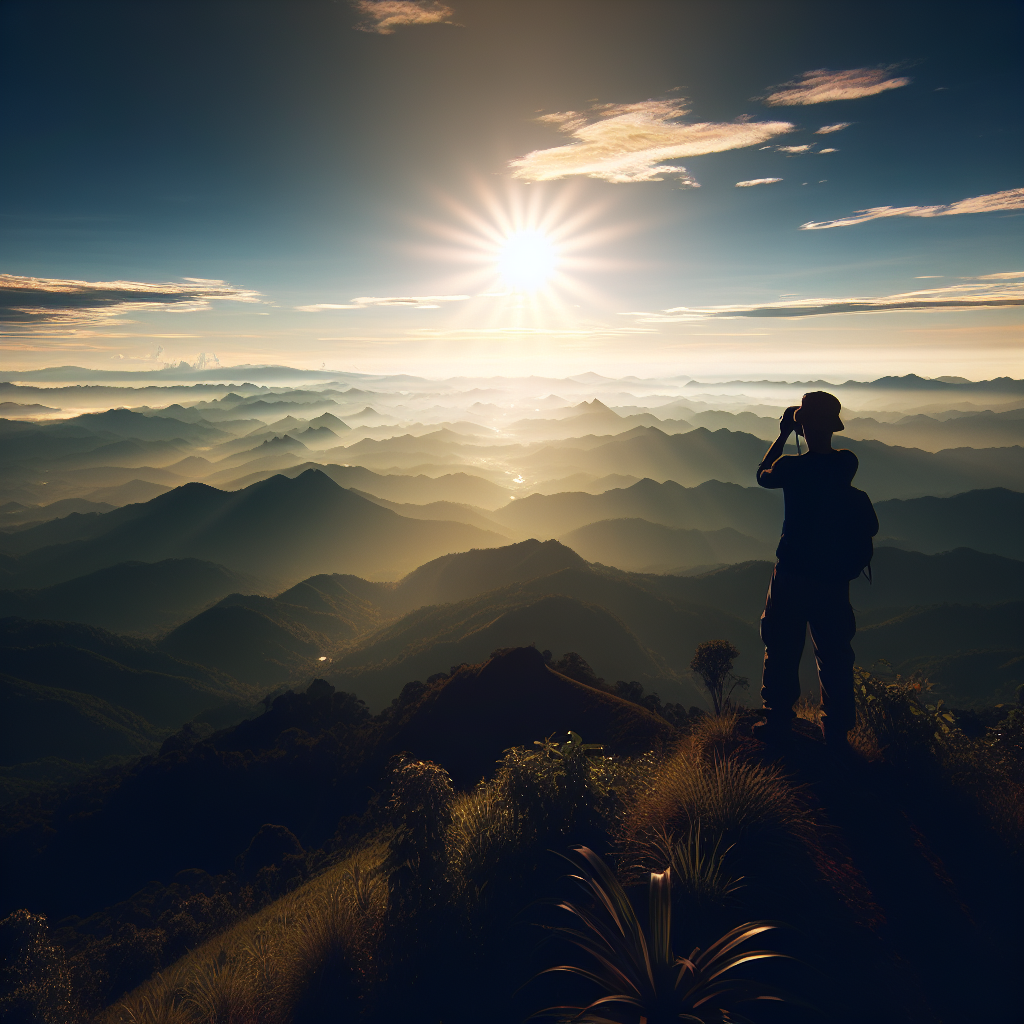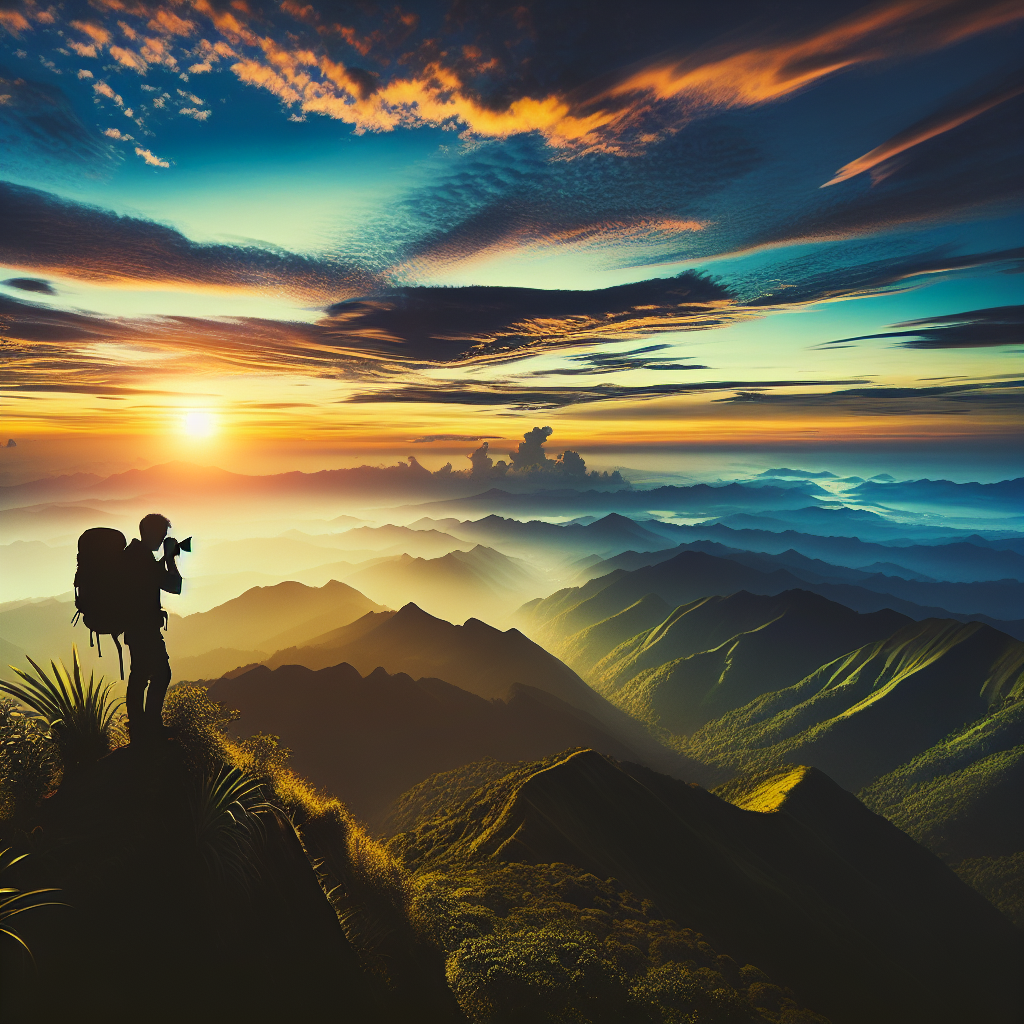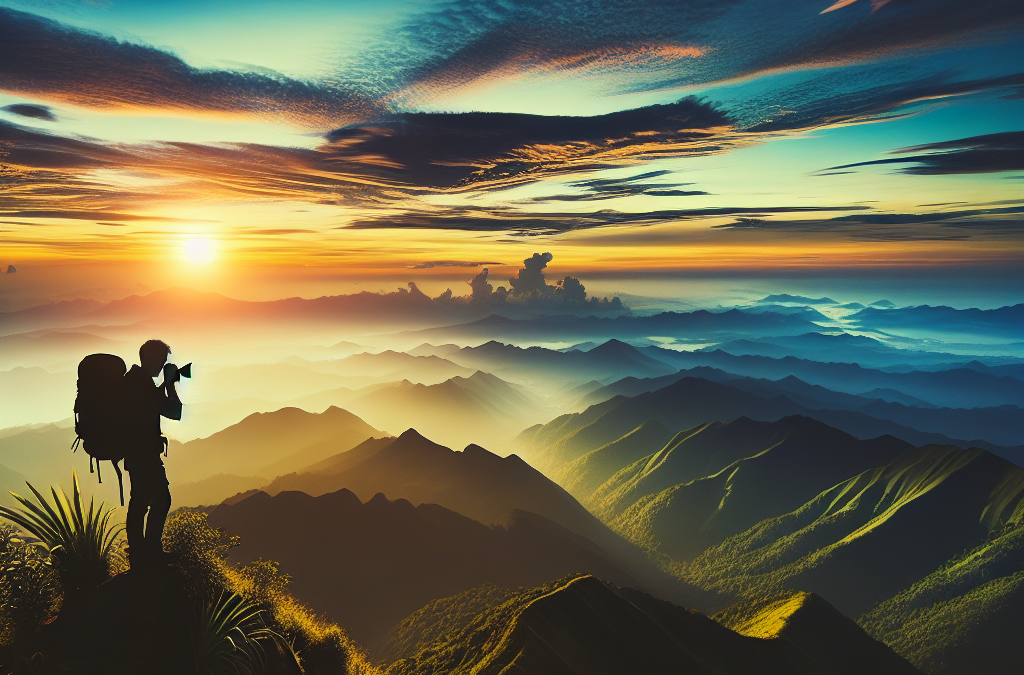Embark on a picturesque journey that combines your love for the great outdoors and photography with the article “Hiking Photography: Capturing The Journey”. It’s an ode to all wanderlust souls and shutterbugs, a perfect blend of art and adventure. The piece elegantly encapsulates the various elements and techniques of photographing your hiking experiences, shaping them into lasting memories. Discover an enlightening new hobby while enhancing your appreciation for nature’s unmatched beauty. So, lace up your hiking boots, ready your camera, and prepare to view the world through a unique, creative lens.

The Essentials of Hiking Photography
Hiking photography is the art of capturing nature’s sublime moments as you trek through the great outdoors. It’s a chance to express your love for adventure and photography by merging these fantastic hobbies. As a result, you get to enjoy the beauty of nature, improve your photography skills, maintain physical fitness, and create memories that last a lifetime.
Understanding the Intersection of Hiking and Photography
The intersection of hiking and photography provides a unique opportunity to experience and capture the natural world from an individual perspective. As you hike, you’re presented with an ever-changing landscape that can’t be replicated. Each hiking trail or path leads to new vistas, each more breathtaking than the last. Photography allows you to capture these moments and experiences, preserving them in time and sharing them with others.
Fundamental Skills Required
Good hiking photographers are not made overnight. It requires a mix of excellent hiking skills and strong knowledge of photography basics. Hiking skills involve endurance, physical fitness, navigation abilities, and understanding weather patterns. Photography, on the other hand, demands a firm grasp of camera operations, exposure, framing, and light manipulation. A good eye for detail and an appreciation for nature’s beauty are also key.
The Role of Patience and Observation
Patience and observation are arguably the most crucial virtues in hiking photography. Nature operates on her terms, and as a photographer, your role is to adapt. You might sit for hours waiting for the right light, or watch a scene for days to capture that split second when everything aligns. Observation helps you read nature’s cues and position yourself right where you need to be for the perfect shot.
Choosing the Right Equipment
Just like any art form, hiking photography requires some essential tools. Choosing the right equipment will allow you to capture incredible photographs without hindering your hiking experience.
Choosing Your Camera: Point-and-shoot vs DSLR vs Mirrorless
Choosing the right camera is one of the most critical decisions you’ll make as a hiking photographer. Point-and-shoot cameras are lightweight and excellent for beginners but often lack advanced features and customization options. DSLR cameras boast excellent quality, lens variety, and flexibility, but they might be bulky for long hikes. Mirrorless cameras strike a balance, offering DSLR-like features and quality in a compact form.
Recommended Lenses for Hiking Photography
The lenses you bring will also heavily influence your shooting capabilities. A wide-angle lens is excellent for capturing sweeping landscapes. A telephoto lens is perfect for framing distant subjects or taking wildlife shots. And a macro lens will help you capture intricate details on small objects like flowers and insects.
The Importance of a Tripod
A solid tripod is a valuable addition to your gear. It provides stability, allowing for sharp, well-composed photos, especially in low-light conditions or when using slow shutter speeds. It’s also crucial when shooting long exposures or time-lapses.
Extra Accessories: Filters, Remote Shutter Releases, Cleaning Kit
Filters can enhance colors, reduce glare, and help control exposure. A remote shutter release can avoid unnecessary camera shake during long exposures. And a cleaning kit will help maintain your gear in optimal condition, particularly crucial in outdoor photography.
Considering Weight and Size for Hiking
Hiking usually involves long hours or days of walking, often over challenging terrain. The last thing you want is being weighed down by excessive gear.
Balancing Versatility and Weight
Aim for versatile gear that covers as many photographic scenarios as possible without adding unnecessary weight. Opt for lightweight equipment that doesn’t compromise on quality or functionality.
Compact Camera Gear for Longer Trails
For longer hikes, consider compact camera gear. Many compact cameras offer similar functionality to their larger counterparts and are easier to carry over long distances.
Protecting Your Equipment: Cases and Bags
Protecting your equipment from harsh weather and accidental falls is essential. Invest in high-quality, weather-resistant cases and bags. They provide adequate padding and compartments for safe, organized storage.
Scouting and Planning Your Photographs
Half the battle in photography is being in the right place at the right time. When it comes to hiking photography, this involves scouting and planning your shots.
Studying the Hiking Trail
Before you start hiking, research your trail. Maps, guidebooks, and online forums can give you a sense of the natural features and viewpoints you’ll encounter.
Seasonal considerations: Weather and Light
Each season offers unique photographic opportunities. The golden hues of fall, the pristine snow of winter, the blooming flowers of spring, or the abundant greenery of summer, all affect the mood of your photographs.
Timing: The Golden Hour and Blue Hour
Photographers rave about the golden hour (shortly after sunrise or before sunset) and the blue hour (before sunrise and after sunset). These periods offer enchanting light that can dramatize your landscape shots.

Composing Your Shot
Good composition can transform an ordinary photo into a masterpiece. Understanding the basics of composition will help you create balanced, engaging pictures.
Appreciating the Fundamentals of Composition
Composition is the arrangement of elements in a scene. It involves framing your subject, utilizing negative space, and understanding the rule of thirds. Master these basics, and your photographs will be well on their way to awesomeness.
Using the Rule of Thirds in Nature
The rule of thirds involves dividing your image into three equal horizontal and vertical parts, and then placing the crucial elements along those lines or their intersections. It’s a simple, effective way to create balanced and interesting photographs.
Integrating the Foreground, Middleground, and Background in Landscape Photography
Hiking photography often involves sweeping landscapes. Integrating different elements of the landscape – foreground, middleground, and background – can increase the sense of depth and scale in your photographs.
Capturing the Wide Landscape
When in nature, your instinct might be to capture everything you see. Wide-angle lenses and panorama techniques can help you seize the grandeur of the landscape.
Mastering the Wide Angle Lens
Wide-angle lenses allow you to capture more of the scene. However, they might also introduce distortion. Mastering this lens involves understanding its limitations and leveraging its strengths to your advantage.
Panoramic and Sequence Shots: Techniques and Tools
Panoramic shots stitch together several photos to create an ultra-wide perspective ideal for capturing vast landscapes. Similarly, sequence shots combine multiple photos of a moving subject, creating a sense of movement and time.
Considerations for Sky and Horizon line
Giving attention to the sky and the horizon line can enhance the drama and depth in your shots. Including interesting skies, cloud formations, and carefully positioning the horizon line can make a world of difference in your landscape photos.
Finding Unique Angles and Perspectives
Looking beyond the obvious can often lead to more engaging and compelling images. Changing your viewpoint or isolating a specific subject can result in unique photographic opportunities.
The Art of Looking Up and Looking Down
Looking up can reveal fascinating patterns, shapes, and contrasts in the overhead canopy of trees or the sky. Looking down can highlight intriguing details or patterns on the ground like fallen leaves, rocks, or small critters.
Isolating Subjects: Macro Photography on Trail
Switching your focus from the grand landscape to the tiny details around you can open up a whole new world of photographic opportunities. A macro lens lets you get close and personal with smaller subjects like insects, plant life, or water droplets.
Using Water Reflection to Your Advantage
Bodies of water present excellent opportunities for photographs. Reflections can offer a mirror image of a scene, adding a surreal quality to your shots. Even wet surfaces can create interesting reflective effects.
Capturing Texture and Detail
Focused shots of texture and detail can add diversity to your portfolio. Zoom in on the bark of a tree, rocks, leaves, or even sand to uncover beautiful details that often go unnoticed.
Photographing Wildlife
Encountering wildlife on hiking trails can be thrilling, and capturing these encounters can be some of the most rewarding experiences in hiking photography.
Ethics of Wildlife Photography
Remember to respect the animals and their habitat. Keep a safe distance, avoid disturbing them, and never feed wildlife. Your goal should be to capture their natural behavior in their environment.
Gear Considerations: Telephoto lens
A telephoto lens is essential for wildlife photography, as it allows you to keep a safe distance from animals while still being able to capture detailed, intimate shots.
Techniques: Anticipating Wildlife Behaviour and Movements
Understanding animal behavior can improve your wildlife photography. Knowledge of where certain animals live, their patterns of movement, and their behavior can help you anticipate and capture captivating moments.
Dealing with Different Weather Conditions
Different weather conditions can dramatically influence the mood and impact of your photographs. A good hiking photographer knows how to make the most of weather conditions, whatever they may be.
Preparing for Diverse Weather
Being prepared for different weather conditions is essential. Protective gear for your camera, adequate clothing, and understanding how weather impacts light can improve your flexibility and creativity.
Photographing in Overcast, Rain and Fog
Overcast, rainy, and foggy conditions can add a moody, mysterious touch to your pictures. They provide diffused light, deep saturated colors, unique reflections, and can make really intriguing images with the right approach.
Capturing the Magic of Snow and Ice
There’s something magical about a snow-filled landscape. The white blanket of snow provides a unique photo opportunity, reflecting light in a way that can create a glowing and enchanting scene. Additionally, ice formations can add an intriguing element to your composition.
Sharing and Showcasing Your Work
Capturing breathtaking images is only half the journey in hiking photography. Sharing your work with the world is the next step, allowing you to connect with others and potentially turn your passion into a profitable venture.
Creating a Consistent Portfolio
A consistent portfolio allows your work to shine. Carefully curate your work showcasing your unique vision, variety, and creative consistency.
Best Platforms for Sharing Nature and Hiking Photography
Social media platforms like Instagram, Twitter, or Facebook; photography networks like 500px, Flickr; or personal blogs/websites are excellent places to showcase your work. Choose the platform that aligns best with your target audience.
Engaging with Photography Community
Connecting with other photographers can provide a meaningful source of inspiration, constructive critique, and valuable learning opportunities. Engaging in photography groups, forums, and events can enrich your photographic journey.
Selling Your Work
Selling prints, licensing your photos, or collaborating with brands can turn your hobby into a profitable venture. Platforms like Etsy, Shutterstock, or your personal website can facilitate these opportunities.
In a nutshell, hiking photography is a constant journey of learning, experiencing, and capturing. With these guidelines, patience, and lots of practice, you’ll be well on your way to mastering the art of hiking photography. So, grab your gear, hit the trails, and let nature inspire your story.

